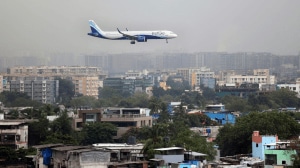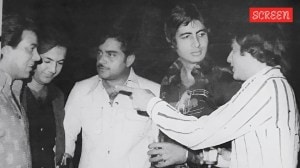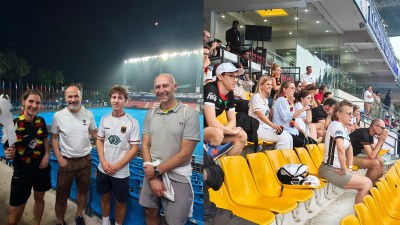“Then the line went dead,” says the son, 24-year-old Govind, waiting for a helicopter at the Indo-Tibetan Border Police (ITBP) camp at Matli. “I know he is dead. I am going to get his death certificate.”

On Sunday, the sixth day of the search and rescue operation after a flash flood swept through Dharali in Uttarkashi district, the Matli helipad is abuzz with Char Dham tourists evacuated from Gangotri, families of missing people, journalists and officials stacking essential food supplies into helicopters. These supplies include vegetables, milk and grains. The choppers drown out the roar of the Bhagirathi flowing nearby.
Rescue authorities say only two bodies have been found since the operation began after the August 5 flash flood. Authorities estimate at least 60 people are missing.
At the entrance to the ground where the Matli helipad is located, several people stand around a few officers, pleading with them for a ride on one of the helicopters taking rations and rescuers to Harsil, which is the nearest helipad to Dharali.
 Located just 10 km from the popular tourist spot Harshil in Uttarkashi district, Dharali was struck by sudden torrential rainfall that caused severe disruption. (Source: Express Photo)
Located just 10 km from the popular tourist spot Harshil in Uttarkashi district, Dharali was struck by sudden torrential rainfall that caused severe disruption. (Source: Express Photo)
One of the officers asks: “There are rescuers at the spot. What will you do even if we take you? Will you dig the muck with your hands?” The group falls silent and retires to a corner.
The group comprises families of workers from Nepal, Uttarakhand and Uttar Pradesh.
Story continues below this ad
Among them is Govind, who works with an adventure sports company in Rishikesh. His father, Laxman, worked as a mason in Dharali.
After Govind’s call with Laxman disconnected when the flash flood hit, further calls went unanswered. He then dialled a coworker of his father’s, who confirmed that Laxman was inside the building when muck engulfed it. “I want to go there. Even if it does not yield any result, my family and I need closure,” he says.
Also hoping to get a helicopter ride to Dharali is Mohammad Ufran, whose brother Furkan and cousin Salman remain missing. “The government has evacuated tourists from Gangotri and Harsil. We do not figure in their priorities,” he says.
 The flash flood, which hit the village of Dharali, is feared to have killed several people. (Express Photo)
The flash flood, which hit the village of Dharali, is feared to have killed several people. (Express Photo)
Ufran, along with his cousins, left for Uttarkashi on August 6, a day after the flood. They had earlier gone to Jolly Grant airport in Dehradun since many evacuees were airlifted to the helipad there. From Matli, they tried but failed to hitchhike up to Harsil, owing to blocked routes at four places between Uttarkashi and Dharali. They were even caught in a landslide at one point.
Story continues below this ad
Undeterred, the five men have decided to undertake the journey on foot if the state government does not take them on a chopper. “We are searching everywhere like madmen. We need to find out what happened,” says Ufran, who owns a salon in Uttar Pradesh’s Sambhal.
His brother and cousin had been working as welders at a location uphill from Dharali for the last three months. On August 5, they had gone down to the village to stock up on supplies when the flood struck. Their phones have been unreachable ever since.
Standing near Ufran, 21-year-old Govind Kumar from UP’s Bijnor is trying not to give in to despair. His brother Yogesh, who also worked with Ufran’s brother and cousin, had gone to Dharali with them on the day of the flood. Yogesh had planned to come home on August 3, but had to stay back at Dharali a bit longer to collect his salary.
“I heard two people at the Harsil camp claim that Yogesh is alive, but had he survived, he would have called,” Kumar says. In the midst of the frenzied chase, Kumar has a moment of peace as his eyes fall on the name Yogesh in a list of those rescued. After he dials the contact number given against it, the receiver tells him the evacuee is Yogesh Semwal from Uttarakhand.
Story continues below this ad
As some people emerge from a helicopter from Harsil, Kumar presses a photo of Yogesh in front of one of them. “My brother was working at a construction site and had gone down to Dharali with his two friends on the day of the flood. Have you seen any of them?” he asks. The man scans the pictures and shakes his head. Only 15 people are currently lodged at the Harsil camp, he says before leaving.
Ufran mutters: “The rescue would have taken two days had the government wanted it. I cannot be led to believe that a man can survive under 50 feet of debris for six days.”
Away from the group, Dilip Singh from Nepal’s Surkhet catches a breath. He has just been taken out of Gangotri, where he was a labourer at a construction site. He has been enquiring with the authorities about his brother, Karan Singh, who was working as a mason in the village. “The video shows his hotel being swept away. We think he is gone,” Singh says. He plans to leave for Surkhet and come back in four days with his nephew.
Suddenly, Kumar gets a call and rushes to a quieter corner, away from the deafening rotors behind him. He asks into the phone: “Yogesh Kumar from Bijnor, have you seen him?” The voice from the other end says a man with a skull cap from UP has been sent to the Army helipad at Chinyalisaur. Kumar calls out to Ufran: “They may have found Salman. Go to Chinyalisaur.”

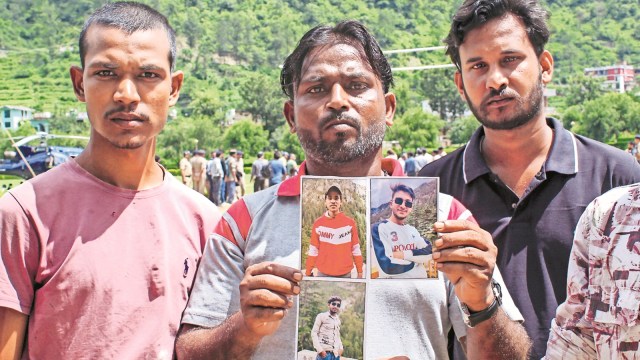

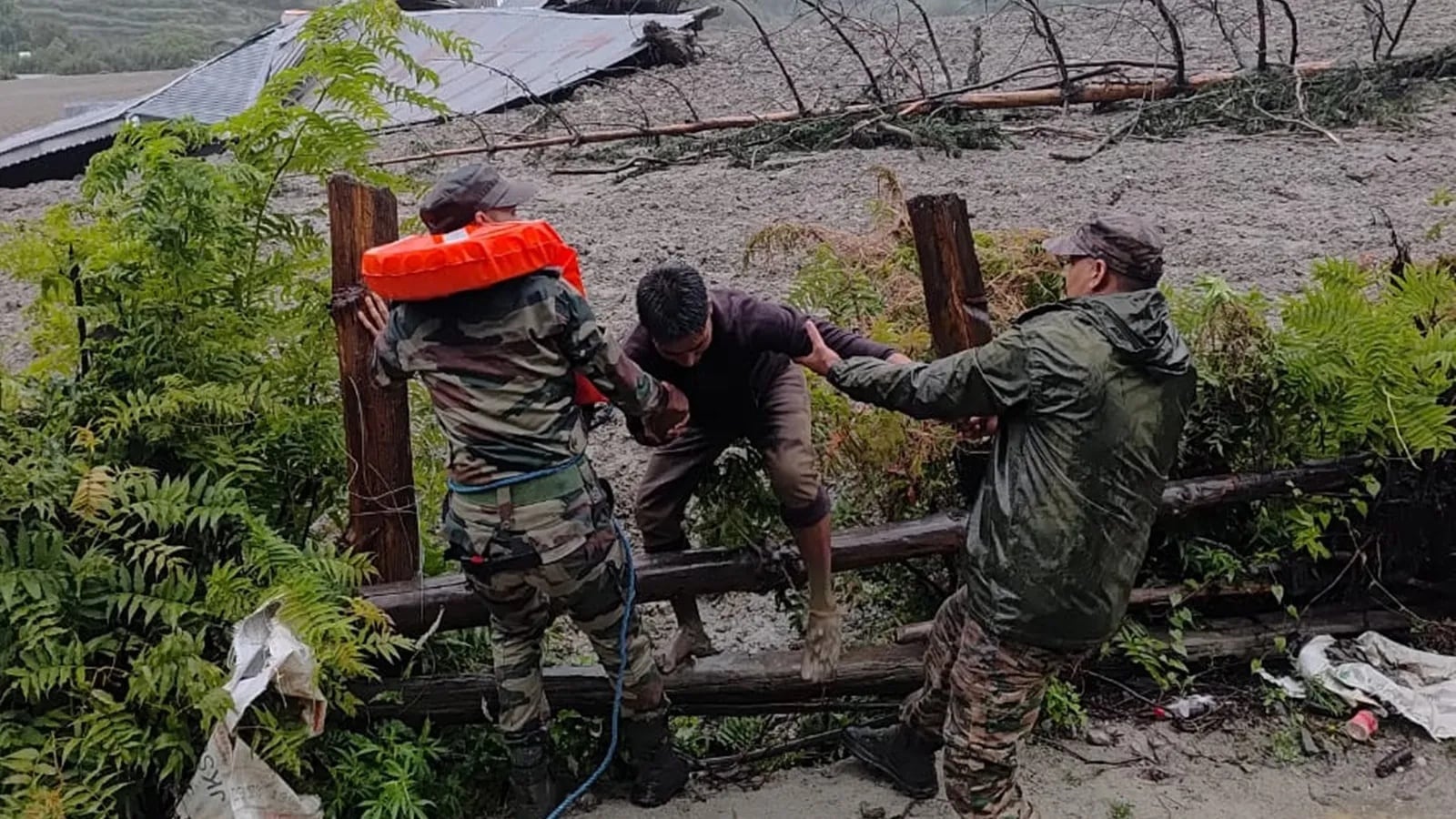 Located just 10 km from the popular tourist spot Harshil in Uttarkashi district, Dharali was struck by sudden torrential rainfall that caused severe disruption. (Source: Express Photo)
Located just 10 km from the popular tourist spot Harshil in Uttarkashi district, Dharali was struck by sudden torrential rainfall that caused severe disruption. (Source: Express Photo)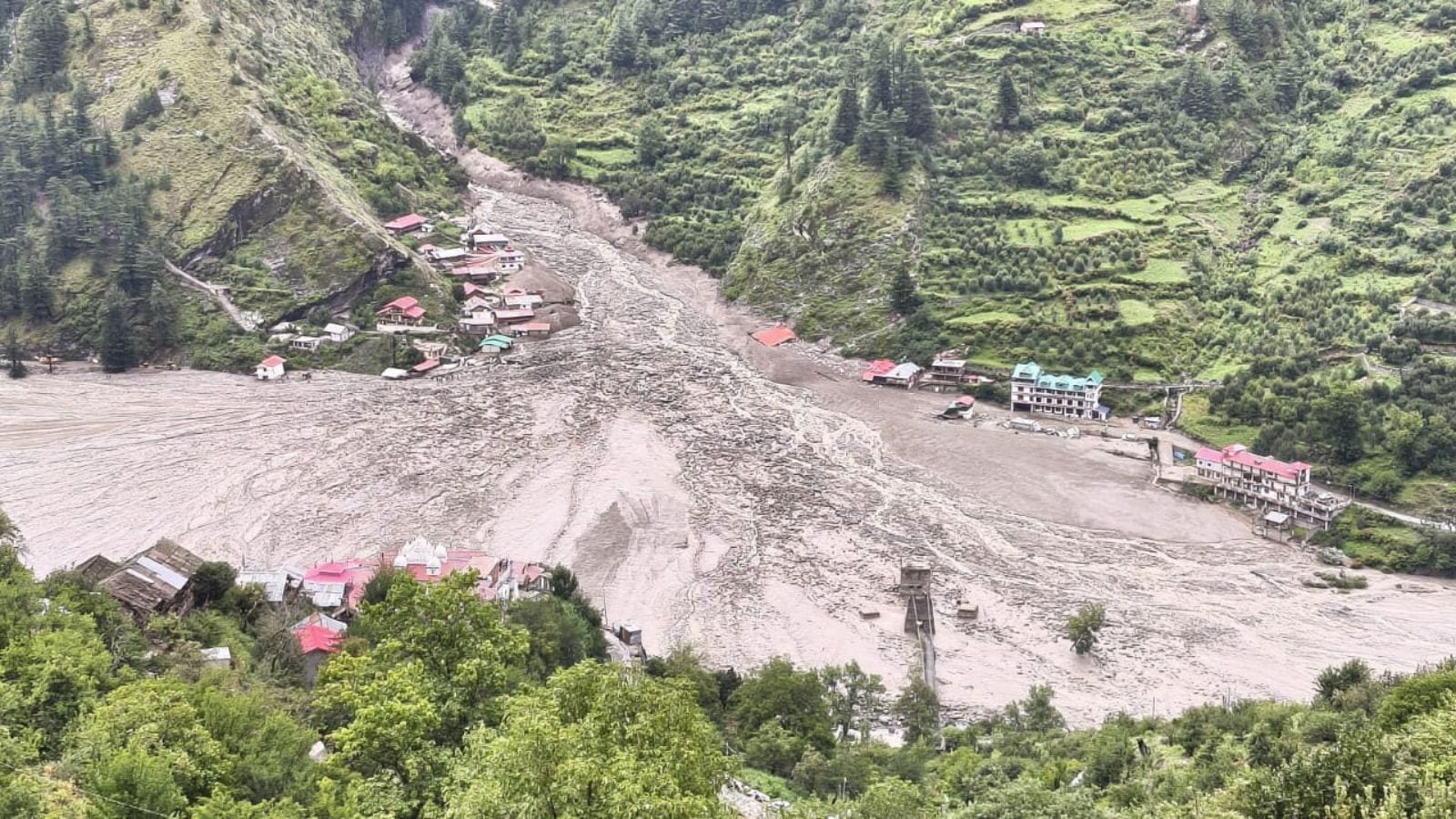 The flash flood, which hit the village of Dharali, is feared to have killed several people. (Express Photo)
The flash flood, which hit the village of Dharali, is feared to have killed several people. (Express Photo)
